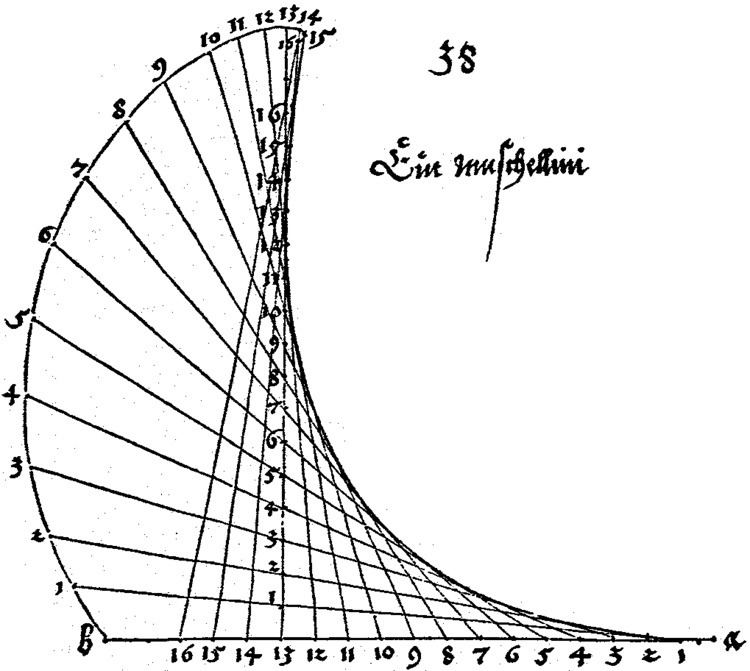 | ||
The conchoid of Dürer, also called Dürer's shell curve, is a variant of a conchoid or plane algebraic curve, named after Albrecht Dürer. It is not a true conchoid.
Contents
Construction
Let Q and R be points moving on a pair of perpendicular lines which intersect at O in such a way that OQ + OR is constant. On any line QR mark point P at a fixed distance from Q. The locus of the points P is Dürer's conchoid.
Equation
The equation of the conchoid in Cartesian form is
Properties
The curve has two components, asymptotic to the lines
Special cases include:
History
It was first described by the German painter and mathematician Albrecht Dürer (1471–1528) in his book Underweysung der Messung (S. 38), calling it Ein muschellini.
